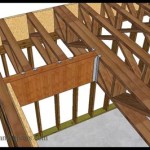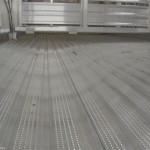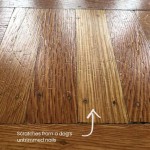Laminate Flooring That Looks Like Slate: Aesthetic Appeal and Practical Advantages
Laminate flooring has become a popular choice for homeowners and businesses alike, largely due to its affordability, durability, and ease of installation. Among the various styles available, laminate flooring that mimics the appearance of slate stands out as a particularly desirable option. This type of flooring offers the visual allure of natural slate without the associated drawbacks, such as high cost, difficult installation, and potential maintenance issues. Understanding the characteristics and benefits of slate-look laminate flooring can assist consumers in making well-informed decisions for their flooring needs.
Slate, a fine-grained metamorphic rock, is prized for its distinctive layered appearance, natural texture, and range of colors, typically ranging from dark grays and blacks to greens and purples. It has been used as a building material for centuries, particularly for roofing, paving, and flooring. The allure of slate lies in its natural beauty and the sense of timeless elegance it imparts to any space. However, natural slate can be a challenging material to work with. It can be expensive to purchase and install, and its porous nature makes it susceptible to staining and water damage if not properly sealed and maintained. Furthermore, slate surfaces can be uneven and cold underfoot, which can be undesirable in certain environments.
Laminate flooring, on the other hand, provides a cost-effective and practical alternative. It is constructed from multiple layers, typically including a core layer made of high-density fiberboard (HDF) or medium-density fiberboard (MDF), a decorative photographic layer that replicates the appearance of natural materials, and a transparent wear layer that protects the floor from scratches, stains, and fading. The photographic layer is where the slate aesthetic comes into play, allowing for a highly realistic imitation of natural slate's color variations, textures, and patterns. This detailed replication allows homeowners to enjoy the look of slate without its inherent disadvantages.
Cost-Effectiveness and Installation Ease
One of the most significant advantages of slate-look laminate flooring is its cost-effectiveness. Compared to natural slate, laminate flooring is significantly less expensive to purchase. The cost savings can be substantial, especially when covering large areas. This makes it an attractive option for homeowners on a budget who still desire the sophisticated appearance of slate. The lower material cost is compounded by the reduced installation expenses. Natural slate requires specialized tools and expertise to install correctly, often necessitating the employment of professional installers. The installation process can be time-consuming and labor-intensive, further increasing the overall cost of the flooring project.
Laminate flooring, in contrast, is designed for ease of installation. Many laminate flooring products feature a click-lock system, which allows individual planks or tiles to be easily snapped together without the need for adhesives. This makes it a suitable option for DIY enthusiasts who are comfortable with basic home improvement projects. Even for those who prefer professional installation, the process is typically quicker and less expensive than installing natural slate. The straightforward installation process minimizes disruption to the household and reduces the overall project timeline.
The ease of installation also contributes to the long-term cost savings of laminate flooring. If a section of the floor becomes damaged, it can be relatively easily replaced without having to remove and reinstall large areas. With natural slate, repairing or replacing damaged tiles can be a more complex and costly undertaking, often requiring specialized tools and expertise to match the existing material and avoid damaging surrounding tiles. The relative simplicity of laminate flooring repairs makes it a more practical and cost-effective option for many homeowners.
Durability and Maintenance Advantages
Durability is a key factor when considering flooring options, and slate-look laminate flooring excels in this area. The wear layer, typically composed of aluminum oxide or melamine resin, provides a robust barrier against scratches, dents, and stains. This makes laminate flooring suitable for high-traffic areas, such as hallways, living rooms, and kitchens. The protective layer also resists fading from sunlight, ensuring that the floor retains its appearance for years to come. Natural slate, while durable in its own right, can be susceptible to chipping and cracking, especially in areas with heavy foot traffic or impact. The consistent composition of laminate flooring provides a more uniform and predictable level of durability.
Maintenance is another area where laminate flooring offers significant advantages over natural slate. Slate is a porous material, which means that it can absorb liquids and stains if not properly sealed. Sealing slate requires regular applications of specialized sealants, which can be time-consuming and expensive. Even with proper sealing, slate can still be susceptible to staining from spills, especially acidic substances like wine or vinegar. Laminate flooring, on the other hand, is virtually non-porous, making it highly resistant to stains. Spills can be easily wiped up with a damp cloth, and regular cleaning typically requires only a mild detergent and water.
The low-maintenance nature of laminate flooring makes it a particularly appealing option for busy households or commercial spaces. It eliminates the need for specialized cleaning products or professional maintenance services, reducing the long-term cost and effort associated with maintaining the floor's appearance. The ease of cleaning also contributes to improved hygiene, as laminate flooring is less likely to harbor dirt, dust, and allergens compared to porous materials like natural slate. This makes it a suitable choice for individuals with allergies or sensitivities.
Design Versatility and Realism
Slate-look laminate flooring offers considerable design versatility, allowing homeowners to achieve a wide range of aesthetic styles. The photographic layer can be designed to replicate a variety of slate patterns, colors, and textures, from classic gray slate to more contemporary multi-colored designs. This allows homeowners to customize the look of their floors to match their existing décor and personal preferences. The availability of different plank or tile sizes and shapes further enhances the design possibilities, allowing for creative layouts and patterns.
Modern manufacturing techniques have made significant strides in enhancing the realism of laminate flooring. Embossed-in-register (EIR) technology, for example, aligns the surface texture of the laminate with the printed image, creating a more authentic and tactile feel. This means that the laminate flooring actually mimics the texture of natural slate, with variations in height and depth that add to the visual appeal. The use of high-resolution photography and advanced printing processes ensures that the colors and patterns are accurately reproduced, creating a convincing imitation of natural slate's unique characteristics.
Furthermore, slate-look laminate flooring can be used in a variety of settings, from residential homes to commercial spaces. It is suitable for use in kitchens, bathrooms, living rooms, bedrooms, and hallways, as well as offices, retail stores, and restaurants. Its durability and water resistance make it a practical choice for areas that are prone to spills or moisture. The design versatility of slate-look laminate flooring allows it to complement a wide range of architectural styles, from traditional to contemporary.
While slate-look laminate flooring provides a compelling alternative to natural slate, it is important to consider its limitations. It does not possess the same inherent uniqueness as natural stone, where each tile is slightly different. However, manufacturers often incorporate variations in the printed images to mimic the natural variations found in slate, reducing the repetitiveness of the design. Additionally, laminate flooring does not have the same thermal properties as natural slate. Slate is naturally cool to the touch, while laminate flooring tends to be warmer. However, this can be an advantage in colder climates, as it can provide a more comfortable surface underfoot. Using underfloor heating can further enhance the warmth of laminate flooring.

Pergo Sample Portfolio Wetprotect Graphite Slate Waterproof Tile Look Laminate Flooring In The Samples Department At Com

Modern Laminate Plank Flooring Slate Look Floor With Slip Resistant Clearhalo

The Kitchen Floor Looks Like Slate But Its Really A Pergo Textured Laminate My Flooring Bathroom In

Goodhome Slate Black Stone Design Tile Effect Laminate Flooring 2 53m² Diy At B Q

Black Slate Laminate Floor Traditional Other By Dupont Houzz

Pergo Sample Portfolio Wetprotect Graphite Slate Waterproof Tile Look Laminate Flooring In The Samples Department At Com

Modern Laminate Plank Flooring Slate Look Floor With Slip Resistant Clearhalo

Flooring Kitchen Black Tile Bathrooms Laminate In

Cushion Vinyl Flooring Mannington Slate Majesty Surrey Carpet Centre Factory Direct

Tile With Igt Collection Luxury Vinyl Flooring In Slate Copper Trucor Dh Floors
Related Posts








